Parandi Rangbirangi..!
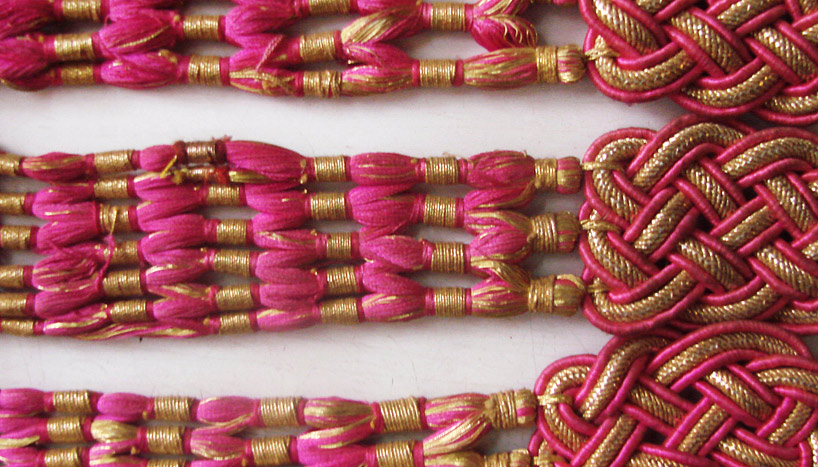
The land of five rivers, that bravely withstood the attacks of different invaders over centuries, is also the land of undying vivacity and vitality, exuding warmth and energy through its prosperity and multi-coloured folk culture. Punjab, whose fertile lands also form the perfect base for thevibrant dances Bhangra and Gidda, holds a treasure of wonderful festivals, cuisine and crafts.
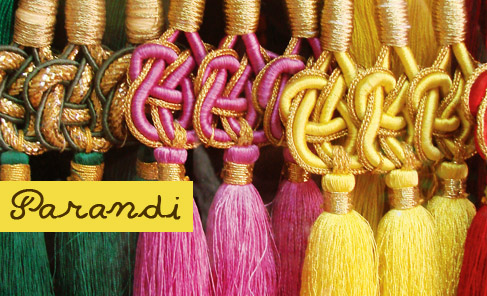
Parandi craft Punjab
In Punjab, the tradition of handmade dowry holds strong, symbolizing a concern with survival of traditional crafts. At the time of her wedding, the bride is given seven auspicious things by her parents. All these dowry items are used for adornment of the bride, and are reflective of some or the other handicraft, such as the embroidered Phulkari cloth, the pieces of jewellery, tikka and nath and the hair accessory, Parandi.
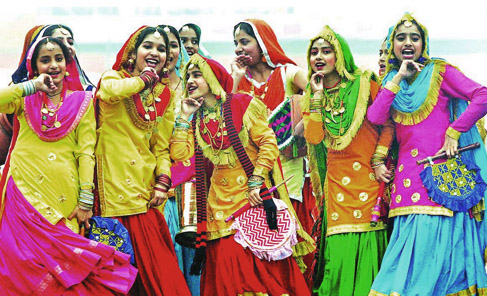
Parandi is a long bunch of threads with elaborate decorative tassels at the lower end, and are used by Punjabi women to braid their long hair. Women all over India, wear a lot of jewellery – bangles, tikka, jhumkas, necklace and nath (nose ring). But what makes an outfit typically Punjabi is the Parandi; the fancier the better, the longer the better, and often the braid is wrapped with golden gota (ribbon) to make it even more prominent.
It is not by accident that there are so many Punjabi songs about it – “Kali Teri gutt, Te paranda teraa laal ni”.
Parandi is one of the most fascinating expressions of the Punjabi folk art. Making parandi took roots long ago in Punjab with Patiala being one of the oldest centres of parandi making in the country. Women have always been fond of decorating their hair, but since they were supposed to cover their head, their hair accessories such as golden clips and pins were hardly visible under the dupatta. The maharanis and the women of the royal families of Patiala came up with the clever idea of adorning the lower end of their plaits with rich gold and multi-coloured threads, ribbons and pearls, enhancing the royal look of their attire, with this ingenious hair accessory. Gradually this took the form of Parandis, which are an extension of the plait, and became popular among the masses.

Parandi craft Punjab, Artisan
The process of making Parandi involves a lot of creativity, as the craftsmen have to pack interesting decorative elements in a basic structure that remains constant.The parandi is divided into two major parts, the upper part, which is made from tying three strands of long woolen threads together and the lower part, also known as the flower, which is for the decorative purpose. This decorative tassel, or flower is made in a variety of forms, sizes and colours and it brings out the creativity and skill of the craftsmen.
The tassel is made up of three parts, Angoori, which is a loop for attaching with the upper part of the parandi, the Surahi, which is a conical structure that holds the elements together and the Flower, which makes the final, open ends of the Parandi.

Parandis are made using very simple tools, just a pair of scissors and a comb, along with a small, pillar like object called “Thullu”. This is the main tool used on which the whole structure of parandis is made. It has a stone base and a vertical wooden rod, on which an iron hook is fitted on the top. This iron hook is used to hold the threads of the parandi, while it is being made.
Parandis have evolved from the time of their invention. While some elaborate designs were discontinued and material replaced with inexpensive synthetic replacements, certain basic elements remain unchanged. Craftsmen took inspiration from the things they saw, motifs from nature, architecture, and even food and added value with the use of mirrors, pearls, ghungroos (small metal bells) and zari.

One of the oldest designs was the “Jaali wali Parandi”, in which the threads were braided in such a way that they resembled a jali. Its design was inspired by the architecture of Qila Mubaraq, the fort of Patiala. This parandi was 12 inches long and very heavy. The Maharani of Patiala specially got it made from a crafts person, who was also rewarded for this work. This design became very popular among the women of royal families.
While the “Moti Parandi” was another favourite among royal families, as moti, or pearls, gave the impression of jewellery, the mirror parandis were inspired from mirror work done on palace walls and the clothes of royalty.
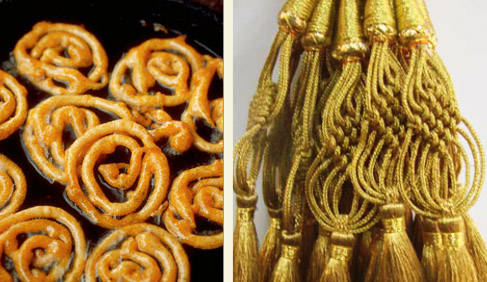
Parandi craft Punjab, Jalebi design
The “Jalebi Parandi” and “Laddoo Parandi” get their names from the sweets that are inspiration for their shapes. An old design, the Jalebi Parandi has intricate designs made by knotting and braiding dories(decorative yarns) in different ways to create complex interwoven round forms.
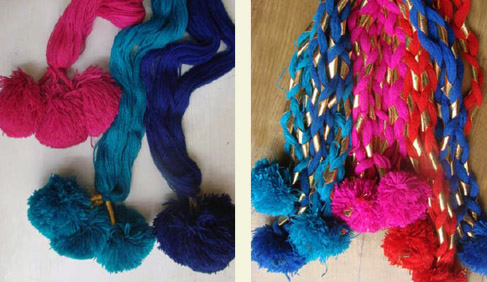
The Laddoo Parandi consists of balls made of woolen threads at the end of the tassels. Earlier when child marriage used to happen, girls were supposed to wear single coloured woolen threads with laddoo (round woolen tassels) attached underneath. It was a single piece of parandi which was easy to maintain by young girls. As they grew older, more decorative elements like gota and beads were added to the parandis.
There is no limit to the enthusiasm of Punjab’s craftsmen. They have this panache for turning seemingly dull materials into wonderfully attractive pieces of adornment. Constantly evolving and improvising with new materials, forms and myriad colours, the craftsmen are not just keeping this folk craft alive, but also taking it to new levels of artistic creativity.
By Manik Singh

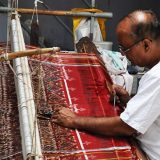








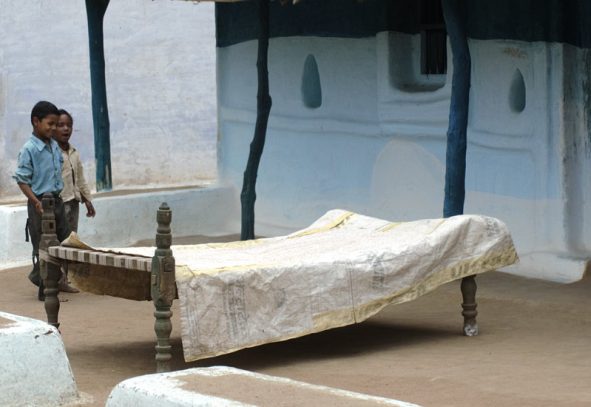
Seema
Plz tell how to buy laddoo parandi
Sarb sran
I want more detail of parandi